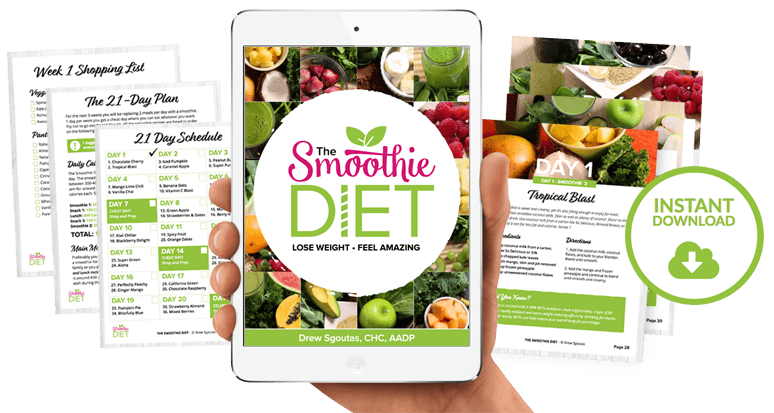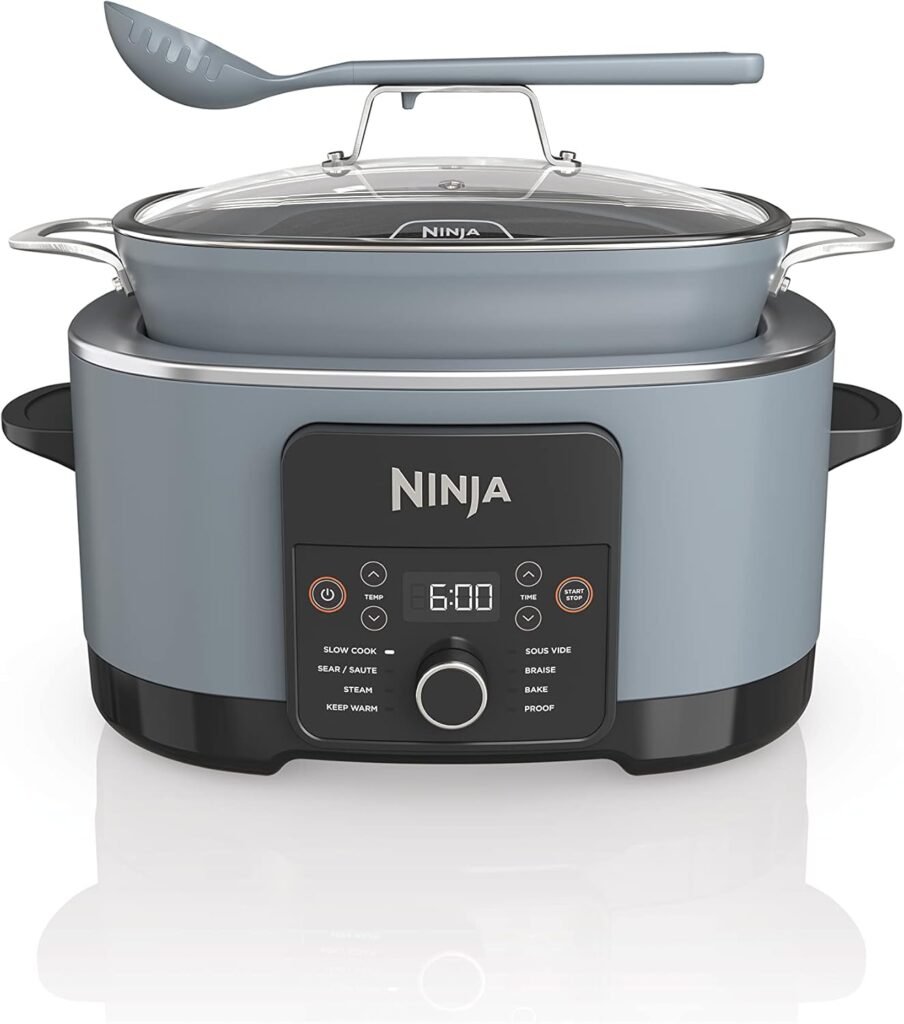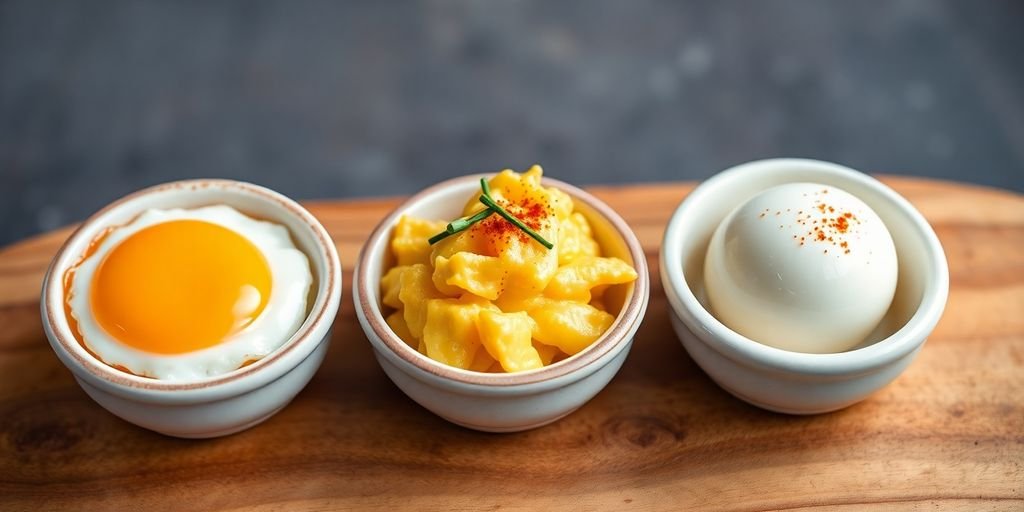Ever wanted to make your food look super fancy for Instagram? Well, get ready, because we’re talking about Egg Flights! This guide will show you how to cook eggs in a bunch of different ways and put them together so they look amazing. We’ll cover everything from sunny-side up to perfectly poached, making sure your Egg Flights are ready for their close-up.
Key Takeaways
- Deviled eggs can be really pretty and taste good too if you try different flavors and ways to show them off.
- Making a sunny-side up egg just right means getting those edges golden and the yolk perfectly runny.
- Hard-boiled eggs are simple, but you gotta know a few tricks to avoid that weird green ring and make them easy to peel.
- Poached eggs don’t need a lot of fancy stuff; just a few basic steps will get you that ideal soft center.
- Soft-boiled eggs are a mix of runny and firm, giving you that nice ‘jammy’ yolk that’s super popular.
Mastering the Art of Deviled Egg Flights

Deviled eggs are a classic for a reason, but let’s be honest, sometimes they can feel a little… predictable. That’s where the idea of a deviled egg flight comes in! It’s all about taking that familiar favorite and turning it into something exciting and visually appealing. Think of it as a tasting menu, but with eggs!
Crafting Visually Stunning Deviled Egg Displays
Presentation is key when you’re aiming for Instagram-worthy flight eggs. Forget just plopping them on a plate! Consider using tiered serving dishes to add height and dimension. Play around with different arrangements – a circular pattern, a linear display, or even a scattered, organic look can all work, depending on your style. The goal is to make it look as good as it tastes. Think about the colors too! Use toppings that contrast with the creamy yellow of the filling to make them pop.
Exploring Diverse Flavor Profiles for Egg Flights
The beauty of a deviled egg flight is the opportunity to experiment with flavors. Don’t limit yourself to just the classic mayo, mustard, and paprika combo. Think about incorporating ingredients like sriracha for a spicy kick, avocado for creaminess, or even smoked salmon for a touch of elegance. Here are some ideas to get you started:
- Spicy: Sriracha, jalapeño, or a dash of hot sauce.
- Savory: Bacon bits, crumbled blue cheese, or sun-dried tomatoes.
- Fresh: Chopped dill, chives, or a squeeze of lemon juice.
- Sweet: A drizzle of honey or a sprinkle of brown sugar (trust me!).
The key is to offer a variety of flavors that appeal to different palates. Aim for at least three to five different variations in your flight to keep things interesting.
Elevating Your Deviled Egg Presentation
It’s the little details that truly elevate your deviled egg flight. Instead of just spooning the filling into the egg whites, try using a piping bag for a more professional look. A simple star tip can create beautiful swirls and add a touch of elegance. And don’t forget the garnishes! A sprinkle of paprika is always a good choice, but consider other options like fresh herbs, edible flowers, or even a few strategically placed capers. Here’s a simple table to help you:
| Topping | Flavor Profile | Visual Appeal |
|---|---|---|
| Smoked Paprika | Smoky | Red |
| Fresh Dill | Herbaceous | Green |
| Everything Bagel Seasoning | Savory | Textured |
Perfecting the Sunny-Side Up Egg for Your Flight
Sunny-side up eggs are a classic for a reason. They’re simple, delicious, and when done right, visually stunning. For an egg flight, they offer a beautiful contrast to other egg preparations, adding a touch of golden goodness. But achieving that perfect sunny-side up egg takes a little practice. It’s all about balancing the heat and timing to get a set white and a runny yolk. Let’s get into the details.
Achieving Golden-Brown Edges on Fried Eggs
The key to those Instagram-worthy golden-brown edges is heat and a little bit of fat. I like to use butter, but olive oil or even bacon grease works too. Get your pan nice and hot over medium-high heat. Once the fat is melted and shimmering, gently crack your egg into the pan. The edges should start to sizzle almost immediately. If they don’t, your pan isn’t hot enough.

- Use a non-stick pan for best results.
- Don’t overcrowd the pan; cook one or two eggs at a time.
- Spoon some of the hot fat over the whites to help them cook evenly.
Getting those edges just right is a matter of personal preference. Some people like them crispy and almost lace-like, while others prefer a more subtle browning. Experiment to find what you like best.
The King of Instagram Foods: Sunny-Side Up
It’s no secret that sunny-side up eggs are photogenic. That vibrant yellow yolk against the white background just screams breakfast goals. But beyond the aesthetics, there’s something inherently satisfying about that first bite when the yolk oozes out. For an egg flight, the visual appeal is just as important as the taste. A well-placed sunny-side up egg can really elevate the presentation. Think about how the optimal pre-flight meals can set the stage for a great trip, just like a perfect egg can make your meal.
Techniques for Flawless Fried Egg Yolks
Achieving a perfectly runny yolk is the holy grail of sunny-side up eggs. Here’s how to do it:
- Use fresh eggs: Fresh eggs have thicker whites, which help them hold their shape better.
- Low and slow: While you want high heat for the edges, you need to lower the heat slightly to cook the whites without overcooking the yolk.
- Patience is key: Don’t rush the process. Let the egg cook undisturbed until the whites are set but the yolk is still jiggly.
Here’s a quick guide to yolk consistency based on cooking time (adjust based on your stove):
| Time (minutes) | Yolk Consistency | Notes |
|---|---|---|
| 2-3 | Very runny | Whites may still be a bit translucent |
| 3-4 | Runny | Ideal for most people |
| 4-5 | Slightly thickened | Yolk will still flow, but slower |
If you’re worried about the whites being undercooked, you can try covering the pan for the last minute or two of cooking. This will trap the steam and help cook the whites from the top. Just be careful not to overcook the yolk!
The Essential Guide to Hard-Boiled Egg Flights

Preventing the Green Ring in Hard-Boiled Eggs
That dreaded green ring! It’s the bane of many a hard-boiled egg enthusiast. It’s not harmful, but it definitely doesn’t look appetizing in your egg flight. This ring forms when eggs are overcooked, causing a reaction between sulfur in the egg white and iron in the yolk. To avoid it, precise timing is key. Don’t let those eggs simmer for too long! Immediately cooling the eggs in an ice bath after cooking also helps prevent the ring from forming. Think of it as shocking the eggs to stop the cooking process.
Foolproof Methods for Easy Peeling
Peeling hard-boiled eggs can be frustrating, but it doesn’t have to be! There are a few tricks to make the process much easier. One popular method involves adding a teaspoon of baking soda to the water before boiling. This supposedly helps to loosen the shell from the egg. Another trick is to shock the eggs in an ice bath immediately after cooking. The rapid temperature change causes the egg to contract slightly, making it easier to peel.
Here’s a quick rundown of peeling methods:
- The Tap and Roll: Gently tap the egg all over to create small cracks, then roll it on a hard surface to loosen the shell.
- The Water Bath: After cracking the shell, submerge the egg in a bowl of water and peel it underwater. The water helps to separate the shell from the egg.
- The Spoon Method: Gently insert a spoon between the egg and the shell, using it to pry the shell away.
I’ve found that using slightly older eggs (about a week old) makes peeling easier. Fresh eggs tend to stick to the shell more. Also, don’t be afraid to experiment with different methods to find what works best for you. Everyone has their own preferred technique!
Simple Steps for Perfectly Cooked Hard-Boiled Eggs
Achieving perfectly cooked hard-boiled eggs is simpler than you might think. It’s all about timing and temperature control. First, place the eggs in a saucepan and cover them with cold water. Make sure the water level is about an inch above the eggs. Bring the water to a rolling boil over medium-high heat. Once boiling, remove the saucepan from the heat, cover it with a lid, and let the eggs sit for a specific amount of time, depending on your desired level of doneness. For firm, but not rubbery, eggs, aim for around 10-12 minutes. After the eggs have rested, transfer them to an ice bath to stop the cooking process. This is crucial for achieving the right texture and preventing overcooking. Remember to adjust the cooking time based on the size of your eggs. Larger eggs will require a bit more time, while smaller eggs will need less. With a little practice, you’ll be able to consistently produce perfectly cooked hard-boiled eggs for your egg flights.
Creating Exquisite Poached Egg Flights

Poached eggs are a fantastic addition to any egg flight, offering a delicate texture and rich flavor that complements a variety of dishes. The key to a great poached egg is a perfectly runny yolk and a tender, fully cooked white. It might seem intimidating, but with a few simple techniques, you can easily master the art of poaching eggs and create stunning egg flights.
The Minimalist Approach to Poached Eggs
Sometimes, the simplest approach is the best. For a classic poached egg, all you really need is fresh eggs, water, vinegar, and a pot. Forget fancy gadgets; a basic setup can yield amazing results. The vinegar helps the egg whites coagulate quickly, creating that perfect teardrop shape. Just bring the water to a gentle simmer, create a whirlpool, and gently slip in your egg.
Achieving the Ideal Poached Egg Consistency
Getting the consistency just right is crucial. Nobody wants a watery, undercooked egg white or a rock-hard yolk. Here’s a quick guide:
- Runny Yolk: Aim for a cooking time of about 3 minutes for a perfectly runny yolk.
- Slightly Set Yolk: Cook for 4 minutes if you prefer a slightly thicker yolk.
- Fully Set Yolk: If you want a fully cooked yolk, poach for around 5 minutes.
Remember, these times are approximate and may vary depending on the size of your egg and the heat of your simmer. Always check for doneness by gently poking the yolk with a spoon.
Tools and Tricks for Perfect Poached Eggs
While you don’t need a lot of fancy equipment, a few tools can make the process easier.

- Egg Poaching Cups: These silicone or metal cups help keep the egg’s shape intact during cooking.
- Slotted Spoon: Essential for removing the poached egg from the water.
- Small Saucepan: A smaller pan makes it easier to control the water temperature and create a whirlpool.
A great trick is to crack the egg into a small bowl before gently sliding it into the simmering water. This prevents the yolk from breaking and helps the egg maintain its shape. Also, don’t overcrowd the pan; poach eggs in batches to ensure even cooking.
For those who want to try a different approach, you can poach eggs in the microwave for a quick and easy meal.
Designing a Soft-Boiled Egg Flight Experience
Soft-boiled eggs are a delightful middle ground between runny and firm, offering a unique texture that’s both comforting and elegant. Creating a soft-boiled egg flight is all about showcasing this versatility. It’s about playing with timing, presentation, and complementary flavors to highlight the jammy yolk and tender white. Think of it as a culinary journey, where each egg offers a slightly different experience.
The Jammy Yolk: A Soft-Boiled Egg Signature
The hallmark of a perfect soft-boiled egg is its yolk. It should be thick and creamy, almost like a sauce, ready to coat whatever it touches. This texture is achieved through precise timing and temperature control. The white should be set, but still delicate. It’s a balance that requires attention, but the reward is well worth the effort. Consider serving your soft-boiled eggs in egg cups to emphasize their elegance.
Balancing Runny and Set Yolks
Achieving the perfect balance between a runny and set yolk is an art. It’s not just about timing; it’s also about the size and temperature of the egg. Here’s a quick guide:
- Small eggs: 5-6 minutes
- Medium eggs: 6-7 minutes
- Large eggs: 7-8 minutes
Remember to immediately transfer the eggs to an ice bath after cooking to stop the process. This prevents overcooking and makes peeling easier. For those looking to make perfect Hanjuku eggs, this step is especially important.
The Hybrid Perfection of Soft-Boiled Eggs
Soft-boiled eggs are the ultimate hybrid – a blend of textures and flavors that appeal to a wide range of palates. They’re not quite as simple as hard-boiled eggs, but they’re also not as technically challenging as poached eggs. This makes them a great option for an egg flight that’s both impressive and approachable. Consider these serving suggestions:
- With toast soldiers for dipping
- Served over asparagus with parmesan
- Paired with smoked salmon and dill
Soft-boiled eggs are more than just a breakfast item; they’re a culinary canvas. Their unique texture and flavor profile make them incredibly versatile, allowing you to create a truly memorable egg flight experience. Don’t be afraid to experiment with different toppings and accompaniments to find your perfect combination.
Innovative Toppings and Garnishes for Egg Flights

Adding Paprika and Chives for Visual Appeal
Okay, so you’ve got your eggs cooked perfectly, now what? It’s time to think about how to make them look as good as they taste! A simple sprinkle of paprika and some freshly chopped chives can really transform your egg flight. It’s classic for a reason, right? But don’t stop there; think of it as your base layer. Paprika gives a subtle smoky flavor and a pop of color, while chives add a fresh, oniony bite. It’s all about that balance.
Creative Additions to Deviled Egg Fillings
Deviled eggs are begging for creativity. Forget just mayo and mustard (though those are great starting points!). Think about what flavors you love and how you can incorporate them. Here are some ideas to get you started:
- Spicy: Add a dash of sriracha, some finely diced jalapeños, or a pinch of cayenne pepper.
- Savory: Mix in some crumbled bacon, chopped ham, or even smoked salmon.
- Fresh: Incorporate some avocado, chopped dill, or a squeeze of lemon juice.
Don’t be afraid to experiment! Taste as you go and adjust the seasonings to your liking. The goal is to create a filling that’s both flavorful and visually appealing.
Enhancing Flavor with Unique Toppings
Toppings are where you can really let your personality shine. Think beyond the usual suspects and consider some unexpected additions. Here’s a table of ideas:
| Topping | Flavor Profile | Texture |
|---|---|---|
| Crispy Fried Onions | Savory, slightly sweet | Crunchy |
| Capers | Salty, briny | Soft, bursts |
| Microgreens | Fresh, slightly peppery | Delicate |
| Everything Bagel Seasoning | Savory, garlicky, oniony | Crunchy |
Consider setting up a DIY deviled egg bar so everyone can customize their eggs. It’s a fun way to get people involved and discover new flavor combinations. Remember, the best egg flight is one that’s both delicious and visually stunning. So, get creative and have fun with it!
Wrapping It Up
So there you have it! Making egg flights that look good enough for Instagram isn’t as hard as it seems. It’s all about having fun with it. Don’t stress too much if your first try isn’t perfect. Just keep playing around with different eggs, toppings, and ways to set them up. The main thing is to enjoy the process and, of course, eat some tasty eggs. Happy cooking, and get ready for those likes!
Frequently Asked Questions
How do I get crispy edges on my fried eggs?
To get those beautiful golden-brown edges on your fried eggs, make sure your pan is hot enough with a little oil or butter. Once the egg hits the pan, the edges will start to crisp up nicely. Don’t overcrowd the pan!
What causes the green ring around hard-boiled egg yolks?
The green ring around a hard-boiled egg yolk means it’s been cooked too long. To avoid this, cook your eggs just until they’re firm, then cool them down quickly in an ice bath.
What’s the secret to peeling hard-boiled eggs easily?
For easy-to-peel hard-boiled eggs, try adding a little baking soda to the water when boiling, or plunge the cooked eggs into an ice bath right away. This helps the shell separate from the egg.
How can I make perfect poached eggs without them falling apart?
The key to a perfect poached egg is fresh eggs and a little vinegar in the water. The vinegar helps the egg white stay together. Gently slide the egg into simmering water, and don’t stir it too much.
What does ‘jammy yolk’ mean for soft-boiled eggs?
A ‘jammy yolk’ in a soft-boiled egg means the yolk is still a bit runny and gooey, but not completely liquid. It’s a lovely texture that’s somewhere between a runny yolk and a firm, hard-boiled one.
What are some good toppings for egg flights?
You can use all sorts of things! Think fresh herbs like chives or parsley, a sprinkle of paprika for color, crispy bacon bits, a dash of hot sauce, or even a tiny dollop of caviar for a fancy touch.


